
Filter News
Area of Research
- (-) Fusion and Fission (12)
- (-) Neutron Science (127)
- Advanced Manufacturing (22)
- Biology and Environment (53)
- Biology and Soft Matter (1)
- Building Technologies (1)
- Computational Biology (1)
- Computational Engineering (2)
- Computer Science (8)
- Electricity and Smart Grid (3)
- Energy Science (205)
- Functional Materials for Energy (1)
- Fusion Energy (7)
- Materials (83)
- Materials for Computing (13)
- Mathematics (1)
- National Security (28)
- Nuclear Science and Technology (18)
- Nuclear Systems Modeling, Simulation and Validation (1)
- Quantum information Science (1)
- Sensors and Controls (1)
- Supercomputing (63)
- Transportation Systems (2)
News Topics
- (-) 3-D Printing/Advanced Manufacturing (9)
- (-) Advanced Reactors (7)
- (-) Artificial Intelligence (7)
- (-) Clean Water (2)
- (-) Composites (2)
- (-) Grid (2)
- (-) Mathematics (1)
- (-) Neutron Science (120)
- (-) Transportation (7)
- Big Data (2)
- Bioenergy (8)
- Biology (7)
- Biomedical (15)
- Biotechnology (1)
- Buildings (1)
- Chemical Sciences (7)
- Computer Science (14)
- Coronavirus (10)
- Critical Materials (1)
- Cybersecurity (1)
- Education (1)
- Energy Storage (10)
- Environment (10)
- Exascale Computing (1)
- Fossil Energy (2)
- Frontier (2)
- Fusion (22)
- High-Performance Computing (4)
- Hydropower (1)
- Isotopes (1)
- ITER (6)
- Machine Learning (3)
- Materials (14)
- Materials Science (24)
- Microscopy (4)
- Nanotechnology (11)
- National Security (2)
- Nuclear Energy (29)
- Partnerships (3)
- Physics (10)
- Polymers (1)
- Quantum Computing (1)
- Quantum Science (7)
- Security (3)
- Simulation (3)
- Space Exploration (3)
- Summit (6)
Media Contacts

ORNL researchers used the nation’s fastest supercomputer to map the molecular vibrations of an important but little-studied uranium compound produced during the nuclear fuel cycle for results that could lead to a cleaner, safer world.
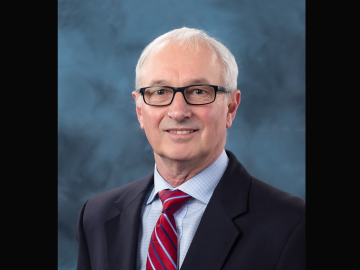
From helping 750 million viewers watch Princess Diana’s wedding to enabling individual neutron scientists observe subatomic events, Graeme Murdoch has helped engineer some of the world’s grandest sights and most exciting scientific discoveries.
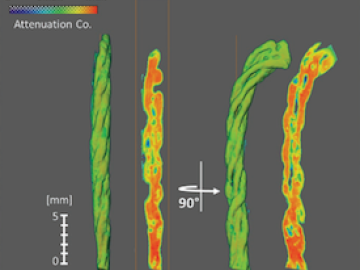
Textile engineering researchers from North Carolina State University used neutrons at Oak Ridge National Laboratory to identify a special wicking mechanism in a type of cotton yarn that allows the fibers to control the flow of liquid across certain strands.

ORNL and the Tennessee Valley Authority, or TVA, are joining forces to advance decarbonization technologies from discovery through deployment through a new memorandum of understanding, or MOU.
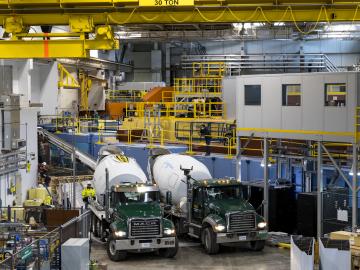
Cement trucks entering and exiting the Spallation Neutron Source are a common sight as construction of the VENUS neutron imaging beamline progresses. Slated for completion and commissioning in 2024-2025, VENUS is the twentieth neutron instrument at SNS and will offer many new capabilities.

Three ORNL scientists have been elected fellows of the American Association for the Advancement of Science, or AAAS, the world’s largest general scientific society and publisher of the Science family of journals.

A team led by the U.S. Department of Energy’s Oak Ridge National Laboratory demonstrated the viability of a “quantum entanglement witness” capable of proving the presence of entanglement between magnetic particles, or spins, in a quantum material.
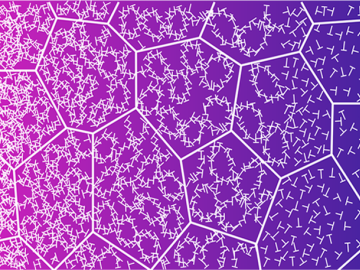

Staff at Oak Ridge National Laboratory organized transport for a powerful component that is critical to the world’s largest experiment, the international ITER project.
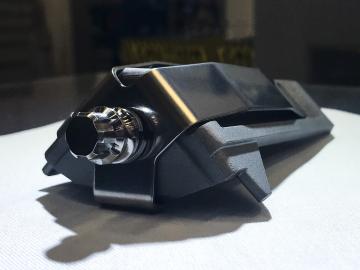
Four first-of-a-kind 3D-printed fuel assembly brackets, produced at the Department of Energy’s Manufacturing Demonstration Facility at Oak Ridge National Laboratory, have been installed and are now under routine operating


